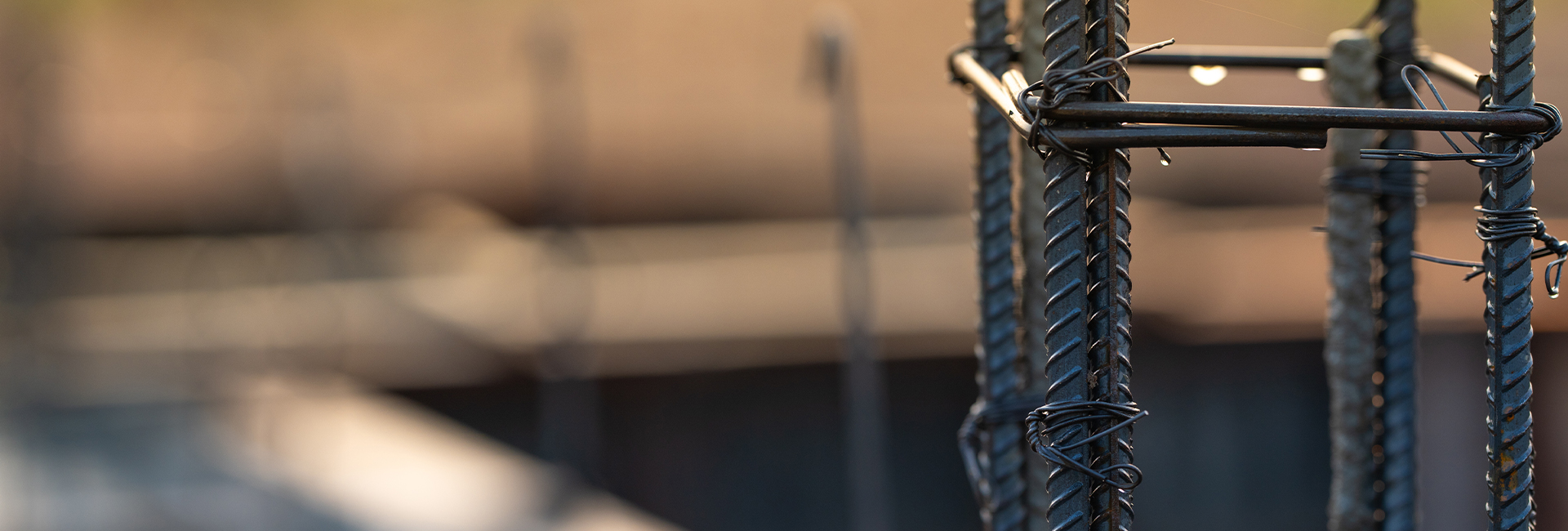In contemporary construction, TMT bars (Thermo Mechanically Treated bars) serve as the unsung hero of load-bearing strength, weather resistance, and long-term safety. From high-rise apartments to bridges and industrial sheds, the Indian skyline is held up by these steel marvels. Among the specified grades, Fe 550 and Fe 550D TMT bars dominate high-strength requirements, driving builders, site engineers, and project consultants to constantly evaluate the 550 vs 550D question.
This article delves deep into the Fe 550 vs Fe 550D debate. We’ll unpack how each grade is manufactured, how the microstructure impacts construction behaviour, and where each bar excels in real-world applications. I’ll also spotlight industry frontrunners like Sree Metaliks, showing how trusted TMT bar manufacturers bring these grades to the market.
What Does Fe 550 and 550D TMT Bar Mean?
The designation “Fe” in Fe 550 TMT bars stands for iron (ferrum), and the number that follows (550) represents the minimum yield strength measured in megapascals (MPa). To put it simply, Fe 550 indicates that the bar will not permanently deform under a stress of 550 MPa. The 550D variant shares the same yield strength of 550 MPa, but the extra “D” denotes a focus on ductility. Essentially, Fe 550D is designed to maintain a high yield strength while providing high elongation and bendability. This combination is particularly valuable in earthquake-prone regions, where bars need to absorb and redistribute energy without fracturing.
In short, both grades start with a yield strength of 550 MPa, yet Fe 550D possesses enhanced ductility, elongation, and seismic performance.
Also Read: Why TMT Bars Are Essential for Structural Columns
Mechanical Properties: Fe 550 vs Fe 550D
The main distinction between the two grades lies in elongation and ductility.
| Property | Fe 550 TMT Bars | Fe 550D TMT Bars |
|---|---|---|
| Yield Strength | 550 MPa (minimum) | 550 MPa (minimum) |
| Tensile Strength | 585 MPa | 600 MPa |
| Elongation | ~8–10% | ~14–16% |
| Ductility | Standard | High |
| Earthquake Resistance | Moderate | Excellent |
| Corrosion Resistance | Good | Superior with ductile strength |
The above table indicates that Fe 550D outperforms Fe 550 in ductility and elongation, making 550D TMT bars particularly suited for regions exposed to seismic risk or for structures that need to absorb shocks without fracture.
Applications of Fe 550 TMT Bars
Fe 550 TMT bars combine elevated yield strength with excellent toughness and are extensively employed in:
- Towering mixed-use developments
- Heavy-duty industrial frameworks
- Super-structures like bridges, flyovers, and metro elevated decks
- Offshore and waterfront structures, where resistance to daily saline conditions is advantageous
The minimum yield of 550 MPa supports design assumptions that weather prolonged service loads, thus assuring safety where rigidity is called for.
Applications of Fe 550D TMT Bars
Conversely, Fe 550D TMT bars blend high tensile strength with impressive ductility, positioning them as optimal reinforcement in the following scenarios:
- Seismic belts, where controlled deformation limits the likelihood of structural failure during tremors
- Coastal developments, safeguarded from marine corrosion by enhanced metallurgical treatments
- Critical infrastructures like dams, elevated expressways, and long-span bridges that demand long-lasting toughness
- Residential schemes located in tectonically active states of India, including Gujarat, the North-East, and the Himalayan belt
In summary, the 550D variant delivers a stronger, more flexible reinforcer than the conventional Fe 550, thus amplifying its adaptability.
Advantages of Fe 550 TMT Bars
- High Strength – Provides superior load capacity, a fundamental requirement for expansive engineering ventures.
- Cost-Effective – Lower initial procurement price makes it a key contender for projects with constrained budgets.
- Durability – Maintains structural integrity when subjected to considerable long-term tensile and compressive forces.
- Wider Availability – Readily manufactured by a majority of India’s reputable TMT steel producers, ensuring steady supply chains.
Advantages of Fe 550D TMT Bars
- Higher Ductility – Exhibits superior elongation and adaptability, facilitating tighter bending radii without fracture.
- Earthquake Resistance – Elevated elongation capacity enables beams and columns to absorb energy and redistribute loads during quakes.
- Corrosion Resistance – A metallurgical fine-grained microstructure equips Fe 550D bars to withstand chemically aggressive environments, thus prolonging structural lifespan.
- Safety Assurance – Guarantees structural resilience under both steady and fluctuating forces.
550 vs 550D: Which One Should You Choose?
The decision between 550 and 550D hinges on the specifics of the project and its location.
- Projects situated in non-seismic areas that prioritise high load-resistance and cost-effectiveness will find Fe 550 TMT bars adequate.
- Conversely, a site within an earthquake belt or near the sea warrants the added protection of Fe 550D, which enhances durability and comfort for the long haul.
In summary, Fe 550D is the evolved form of Fe 550 and has steadily become the benchmark for contemporary builds, despite the modest premium.
Role of TMT Bar Makers in Quality Assurance
Even within the 550 category, the true merit lies beyond the label itself. Characteristics of Fe 550 and Fe 550D hinge on the entire production chain, from mineral intake to finish. First-rate TMT bar producers in India rely on:
- European-derived Thermex lines, giving precisely controlled cooling
- Copper-tap continuous casting to avoid segregation
- Alloy grade testing ratified by BIS in real-time
- Low-water, dry-slag reheating to lower emissions
Investors, designers, and site teams must partner only with mills that meet these benchmarks if buildings are to enjoy the projected seventy-year lifespan that engineers promise.
Market Trends: Fe 550 vs. Fe 550D in India
Demand for Fe 550 and Fe 550D TMT bars in India remains vibrant, yet purchasing behaviours are shifting. Enhanced knowledge of earthquake mitigation and the Ministry of Housing's own green codes are nudging stakeholders toward 550D, renowned for its higher yield and reduced ductile failure risk.
Metro, airports, and urban renewal schemes are already standardising Fe 550D due to its economical grade-anchor ratios, while the mainstream Fe 550 is still the bar of choice for warehouses and pavements beyond seismic lines.
Even with a slender premium attached to 550D, engineers emphasise that the savings of reduced post-tension corrections and lower corrosion-related replacements far outweigh the small additional cost, delivering longevity that a spreadsheet’s NPV often understates.
Sree Metaliks: Your Go-To for Quality TMT Bars
Selecting the right TMT product starts with the right partner. At Sree Metaliks, India’s top-tier TMT bar manufacturer, you’ll find both Fe 550 and the fortified Fe 550D TMT bars manufactured under the same stringent quality controls.
The company’s reputation rests on sourcing premium raw materials, using cutting-edge mills, and rigorously complying with BIS protocols. Consequently, corporate reputation and peace of mind are intertwined among architects, contractors, and site foremen. Projects that mandate exceptional yield, superior elongation, and optimal safety gravitate toward Fe 550D, precisely because the bars absorb shock while retaining form. Aligning a build with Sree Metaliks guarantees specifications aligned with the highest benchmarks of structural resilience, environmental responsibility, and long-term economy.
Conclusion
The choice between Fe 550 and Fe 550D boils down to a contrast between simply high yield and high yield with excellent ductility. Fe 550 stands as a value-driven option, abundant and dependable; yet Fe 550D, with its reassuring deformation response, is engineered to excel in the vulnerable zones of seismic and saline attack.
As cities expand, safety anxieties mount, and authorities prioritise green building, Fe 550D is becoming the go-to choice for contemporary structures. Collaborating with trusted TMT bar producers such as Sree Metaliks guarantees that contractors receive not only superior materials but also the assurance that our projects will endure the test of time. For the infrastructure that will define India’s tomorrow, 550D TMT bars move beyond being a preference; they are an imperative.
For more information, please reach out to us at: Sales@sreemetaliks.com

